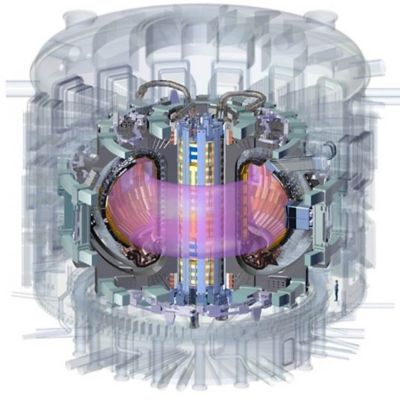-
-
Kostenlose Software für Studierende
Ansys unterstützt die nächste Generation von Ingenieur*innen
Studenten erhalten kostenlosen Zugang zu erstklassiger Simulationssoftware.
-
Verbinden Sie sich jetzt mit Ansys!
Gestalten Sie Ihre Zukunft
Stellen Sie eine Verbindung mit Ansys her, um zu erfahren, wie Simulation Ihren nächsten Durchbruch vorantreiben kann.
Länder und Regionen
Kostenlose Demoversionen
Produkte & Dienstleistungen
Lernportal
Über das Unternehmen
Back
Produkte & Dienstleistungen
Back
Lernportal
Ansys unterstützt die nächste Generation von Ingenieur*innen
Studenten erhalten kostenlosen Zugang zu erstklassiger Simulationssoftware.
Back
Über das Unternehmen
Gestalten Sie Ihre Zukunft
Stellen Sie eine Verbindung mit Ansys her, um zu erfahren, wie Simulation Ihren nächsten Durchbruch vorantreiben kann.
Kostenlose Demoversionen
ANSYS BLOG
July 9, 2021
Energizing Highly Sustainable Next-Gen Nuclear Power Plants with Ansys Simulations
In 2025, the International Thermonuclear Experimental Reactor (ITER), the world’s largest nuclear fusion reactor experiment, will begin a 15-year period of experimentation to demonstrate the scientific and technological feasibility of fusion energy. Engineers from around the world have collaborated for decades to develop this modern marvel, which is designed for record-breaking fusion power gain. Fusion is the energy that powers the Sun and other stars.
Could fusion be the ideal energy source? It just might be. Fusion generates little emissions or radioactive waste, while releasing nearly four million times more energy than a chemical reaction – such as the burning of coal, oil or gas – and four times as much energy as nuclear fission reactions (at equal mass). But there’s a catch: To produce a self-sufficient fusion reaction, the plant must heat up hydrogen isotopes to more than 150 million° C, which then forms an electrically charged gas known as plasma. To maintain this tremendous heat and reliably contain this gas, ITER Organization engineers needed to create the ITER’s electromagnetic (EM) structure design, relying on Ansys simulation solutions to cut material demands and costs.
Credit © ITER Organization, iter.org
“Ansys simulation solutions will continue to help our team to satisfy the required safety and accuracy levels for this first-of-a-kind initiative,” said Bernard Bigot, Director-General of the ITER Organization in recent press release. “For ITER to achieve hydrogen fusion at industrial scale requires unprecedented levels of engineering precision, so it is incredibly important that our simulation software is highly reliable and efficient. Ansys has consistently delivered that capability to us for many years, enabling our team to safely push boundaries, dream bigger and deliver Earth’s biggest fusion reactor.”
Demonstrating the Feasibility of Fusion
The ITER project will demonstrate the feasibility of fusion to generate commercial electricity. If it succeeds, the world may soon harness a practically limitless source of clean energy, offering many of the advantages of traditional fission nuclear plants, but tremendously safer. Think of it as a “holy grail” of clean energy as it would revolutionize how humanity produces electricity.
Diving a bit deeper, ITER would provide an electricity supply that isn’t dependent on what most renewables are based on, such as the wind or sun, nor does it produce CO2. And as the world moves toward electrifying transportation, the need for electricity will radically increase. The more that can be done with less carbon, the easier it will be for world leaders to meet climate goals and slash greenhouse gases.
The implications for the energy sector are vast because nuclear fusion plants could replace potentially all coal-fired and nuclear power plants.
Overcoming ITER’s Engineering Challenges
To create the mechanical design of the main components within the immense ITER device, engineers needed to optimize the machine’s mass and structure to ensure correct usage of construction material. Additionally, they needed to ensure that everything performed well from an EM standpoint because the plasma produces currents that fluctuate over time, creating significant EM forces within the structures. Using Ansys simulations helped ITER engineers visualize the current flows and then transfer the forces that they calculated into structural models. For example, they used Ansys Fluent to optimize the cooling of various components.
Fluent also plays a key role in building a set of documents that ITER engineers use to ensure a robust system design and that the system adheres to stringent project and industry safety requirements. Additionally, Ansys Mechanical plays a critical role in helping engineers build the structural supports that secure ITER’s base.
“To power the sun and the stars, light atoms fuse at very high pressures and temperatures. Replicating this process on Earth with ITER will help solve the world’s energy demands, however, engineers must overcome extremely difficult design challenges,” said Prith Banerjee, chief technology officer at Ansys. “Using Ansys simulations, ITER engineers are rapidly building a structurally sound fusion power reactor, drastically reducing the EM structures’ material content and substantially decreasing the plant’s development cost – driving the delivery of clean, sustainable energy for our planet.”
ITER’s highly innovative engineering team is effectively using Fluent and Mechanical to turn the dream of clean nuclear power into a reality. Check out how engineers are using Fluent and Mechanical to substantially enhance product development across countless industries.
